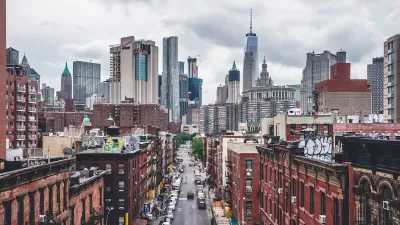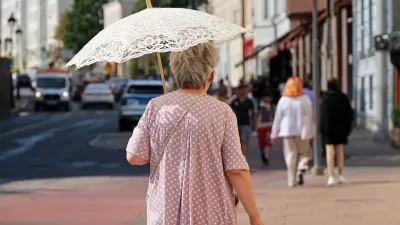A new study published in the Proceedings of the National Academy of Sciences shows how population growth increases greenhouse gas emissions. More importantly, two demographic factors shape the increase, urbanization and aging -with opposite effects.
It would appear that Green Metropolis author, David Owen, who preaches the green virtues of New York City, may have nothing to fear in the report as the urbanization=increased emissions factor applies to developing nations, while the aging=decreased emissions relationship applies to industrialized nations.
"A team of US and Austrian researchers found that urbanisation could increase emissions by up to 25% in some developing nations.
However, industrialised countries could see emissions fall by about 20% as a result of ageing populations."
From USA Today: Study - Slower population growth could reduce climate change: "A slowing of population growth could significantly reduce greenhouse gas emissions by 2050, according to a new study published (Oct.12).
"Scientists estimate global population could rise by more than 3 billion, mostly in urban areas, by midcentury but a slower growth path could cut emissions 16% to 29%, according to the study in the Proceedings of the National Academy of Sciences."
From NCAR: Population trends: Another influence on climate change: The study "was conducted by an international team of scientists from the National Center for Atmospheric Research (NCAR)" and other organizations. "If global population growth slows down, it is not going to solve the climate problem, but it can make a contribution, especially in the long term," says the study's lead author, Brian O'Neill, an NCAR scientist."
Thanks to Gregory Bungo
FULL STORY: Population shifts 'substantially influence' emissions

Planetizen Federal Action Tracker
A weekly monitor of how Trump’s orders and actions are impacting planners and planning in America.

Map: Where Senate Republicans Want to Sell Your Public Lands
For public land advocates, the Senate Republicans’ proposal to sell millions of acres of public land in the West is “the biggest fight of their careers.”

Restaurant Patios Were a Pandemic Win — Why Were They so Hard to Keep?
Social distancing requirements and changes in travel patterns prompted cities to pilot new uses for street and sidewalk space. Then it got complicated.

Platform Pilsner: Vancouver Transit Agency Releases... a Beer?
TransLink will receive a portion of every sale of the four-pack.

Toronto Weighs Cheaper Transit, Parking Hikes for Major Events
Special event rates would take effect during large festivals, sports games and concerts to ‘discourage driving, manage congestion and free up space for transit.”

Berlin to Consider Car-Free Zone Larger Than Manhattan
The area bound by the 22-mile Ringbahn would still allow 12 uses of a private automobile per year per person, and several other exemptions.
Urban Design for Planners 1: Software Tools
This six-course series explores essential urban design concepts using open source software and equips planners with the tools they need to participate fully in the urban design process.
Planning for Universal Design
Learn the tools for implementing Universal Design in planning regulations.
Heyer Gruel & Associates PA
JM Goldson LLC
Custer County Colorado
City of Camden Redevelopment Agency
City of Astoria
Transportation Research & Education Center (TREC) at Portland State University
Camden Redevelopment Agency
City of Claremont
Municipality of Princeton (NJ)




























